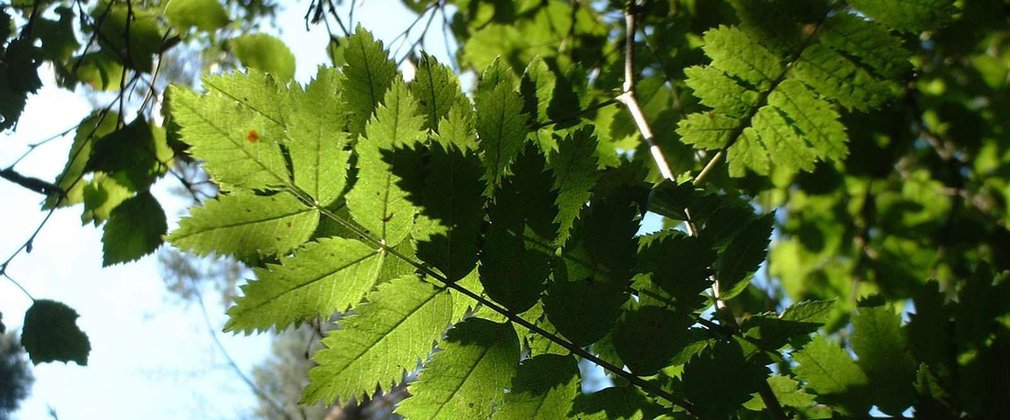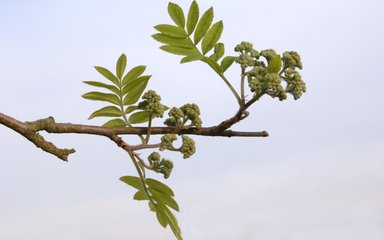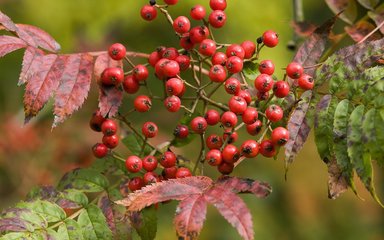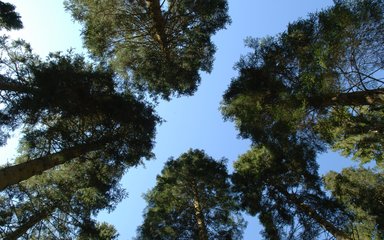
Often called the 'mountain ash' (although of no relation to the ash tree), rowan can be found higher up mountains than most other native trees. This narrow, graceful tree is favoured by browsing animals such as deer and also to a variety of birds who love its red berries.
Rowan facts and figures
- with a life span of around 120 years, rowan (Sorbus aucuparia) can reach 15 metres tall.
- its native range is Northern Europe.
- the red berries produced in the autumn are a very attractive food for migrating birds.

Rowan identification tips
Heading out into the forest? Here are some top things to look for when trying to spot a rowan tree:
- bark: smooth and either purple or grey-brown in colour.
- leaves: usually has 11-15 toothed leaflets, which turn a distinctive red in autumn.
- flowers: cream and heavily scented.
- fruit: berries ripen to a bright red and provide good autumn feeding for many birds.
How rowan is used
Rowan has strong, flexible wood and was traditionally used for making tool handles and longbows.
In the past its red berries, which are high in vitamin c, were turned into a drink to combat scurvy. They are still used today to make a jelly that often accompanies meat.

Did you know? Rowan was often planted outside houses and in churchyards to ward off witches.
Rowan and future forestry
We've been planting rowan trees to diversify upland forests dominated by spruces and pines planted after the Second World War, restoring native woodland.
It has an important role in increasing the biodiversity of woodlands, and the berries are a valuable food source for wildlife.
As one of our most hardy native broadleaves, it will survive on exposed sites and will likely continue to be widespread in our future climate.

